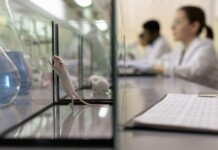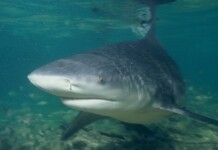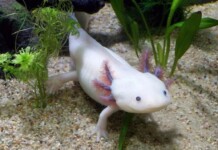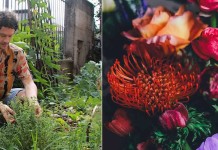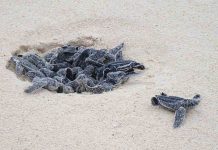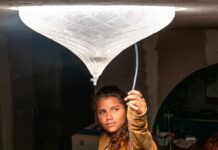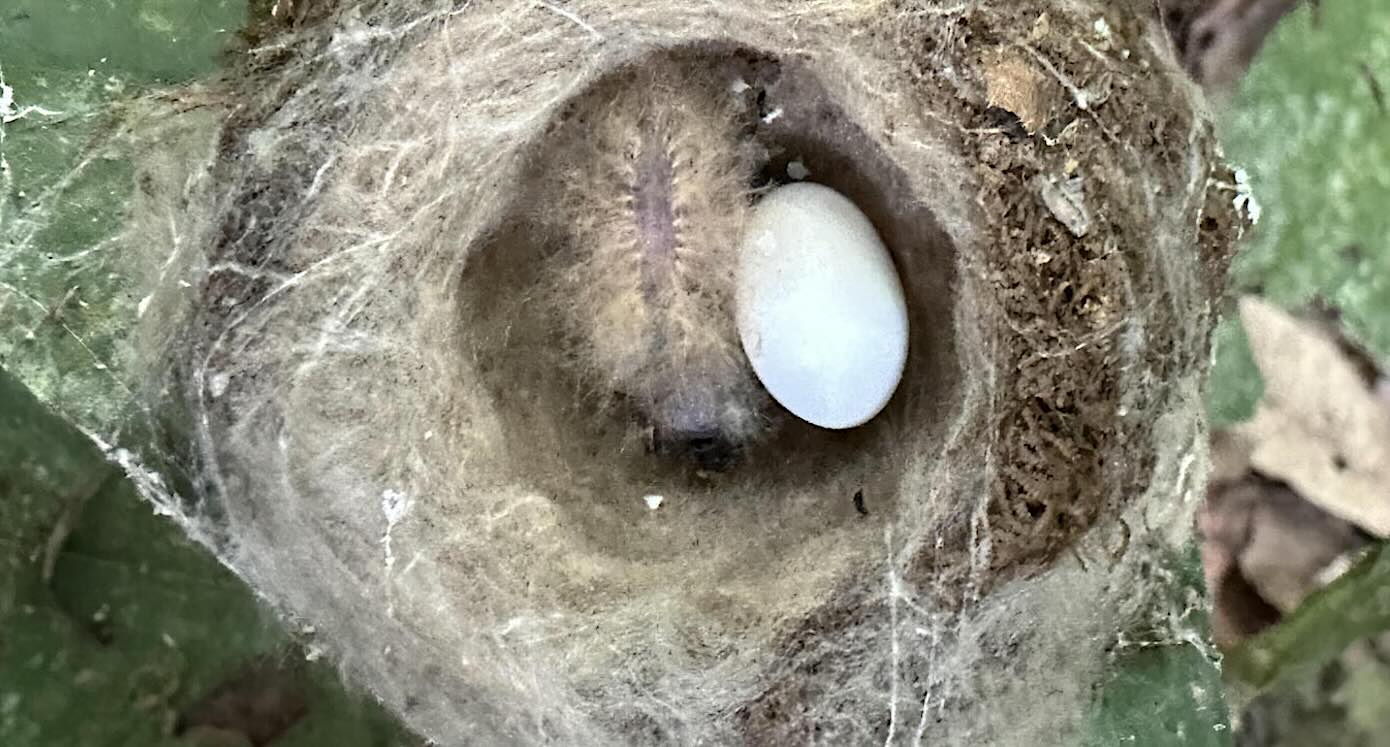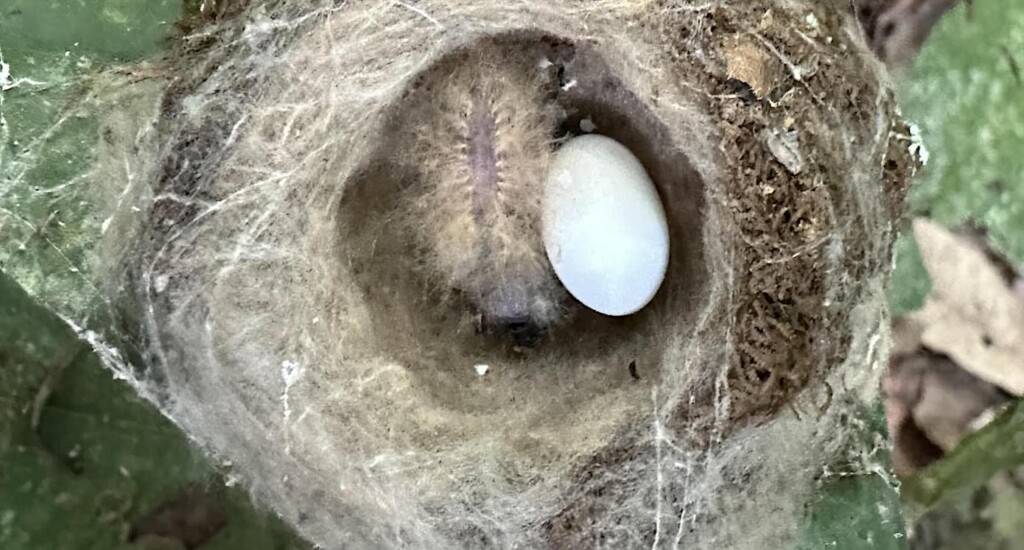
When Jay Falk and Scott Taylor first saw the white-necked Jacobin hummingbird chick in Panama’s dense rainforest, the bird biologists didn’t know what they were looking at.
The day-old bird, smaller than a pinky finger, had brown fuzz all over its body. When Falk and Taylor walked closer to the nest, the chick began twitching and shaking its head—a behavior they had never seen in birds before. (See the video below…)
It turns out the hummingbird might fend off predators by mimicking a poisonous caterpillar that lives in the same region. In a new paper published March 17 in Ecology, Taylor, associate professor at University of Colorado Boulder, and his team described this unusual mimicry behavior for the first time in hummingbirds.
“We know so little about what nesting birds do in the tropics,” said Falk, the paper’s first author and postdoctoral fellow in Taylor’s lab. “But if we put more effort into observing the natural world, we might discover these kinds of behavior are very common.”
The tropical rainforest is a dangerous place for small birds, said Falk, who’s also a researcher at the Smithsonian Tropical Research Institute. Snakes, monkeys, birds, and even insects all prey on them.
So how can tiny hummingbird chicks survive? Falk and his team may have stumbled upon the answer during a trip to Soberanía National Park in Panama last year.
Despite the birds’ frequent visits to Falk’s feeders outside his research station in Panama, Falk had never seen a white-necked jacobin chick or its nest before.
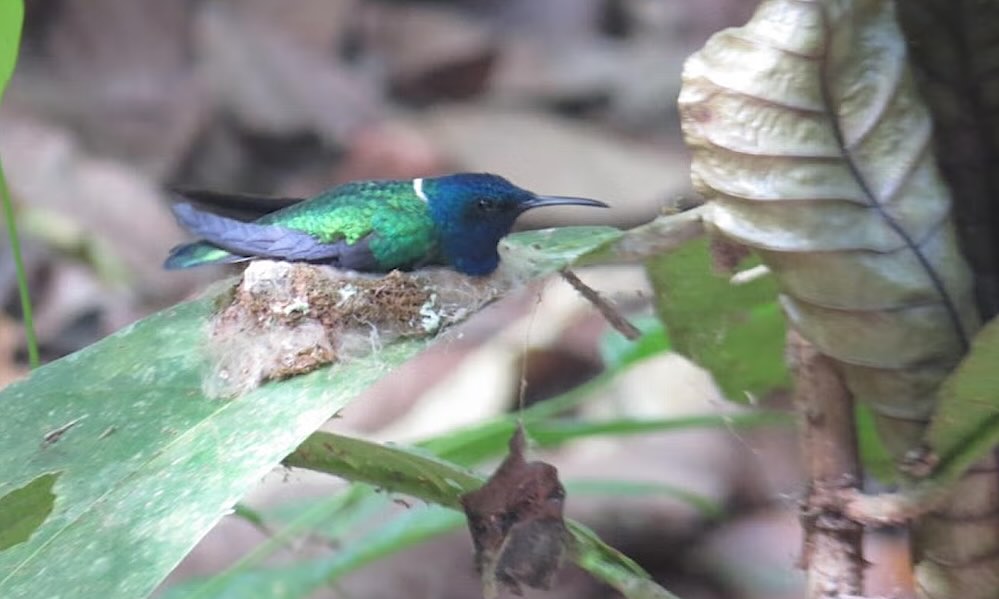
But last March, his Smithsonian colleague Michael Castaño and Sebastian Gallan-Giraldo at the University of Antioquia in Colombia (both co-authors on the paper) discovered a female jacobin hummingbird incubating an egg in its nest, not far from a forest trail. The tiny well-camouflaged nest was made of plant parts to blend in perfectly with the surrounding environment.
Over the following month, the team closely monitored the nest and witnessed a chick hatch from the egg. Unlike most hummingbirds that are born naked, the jacobin chick was covered in long brown feathers, looking nearly identical to the nest material.
That’s when the team witnessed the chick’s unusual jerking behavior. Scientists had never reported a similar behavior in any other hummingbird species.
“I started texting a video to people and asking them, ‘What does this look like?’” said Taylor. “And invariably, they said, ‘That looks like a caterpillar.’ It was very exciting.”
On the second day after the egg hatched, the team saw a predatory wasp approach the chick when the mother was away. As the wasp hovered above the nest, the chick started to twitch its body vigorously like it had for the researchers, swinging its head from side to side. A few seconds later, the wasp flew away.
AMAZING: Rare Hummingbird That Sings is Rediscovered in Colombia Cloaked in Iridescent Blue and Green
The jacobin hummingbird chick reminded Falk and Taylor of a paper they’d seen previously reporting that a young cinereous mourner, a songbird native to the Amazonian rainforest, might resemble toxic orange caterpillars from the region by having a bright orange coat and waving its head from side to side when disturbed.
In this region of Panama, it turns out that many caterpillars have brown hairs that can give painful stings to predators and even kill them. Some of these caterpillars also shake their heads when they feel threatened, much like the chick.
Scientists refer to this survival strategy of mimicking a harmful species as Batesian mimicry. For example, some non-venomous milk snakes have developed a pattern of red, yellow and black coloring similar to that of venomous coral snakes to ward off predators.
“A lot of these really classic examples of Batesian mimicry involve butterflies mimicking other butterflies, or snakes mimicking other snakes. But here, we have a bird potentially mimicking an insect, a vertebrate mimicking an invertebrate,” Taylor said.
WATCH AND LISTEN: 2000 Microphones Unlock the Mystery of Why Hummingbirds Hum: ‘Like a Beautifully-tuned Instrument’
While the study described a single observation, the researchers hope to test their theory in the future through experiments like placing artificial chicks with different looks and behaviors in nests to see which are more likely to be attacked by predators. They also hope to encourage birdwatchers and citizen scientists to document more hummingbird nests.
(Source: Science writer Yvaine Ye / University of Colorado Boulder)
FLY THIS FUN STORY To Hummingbird Fans By Sharing On Social Media…


